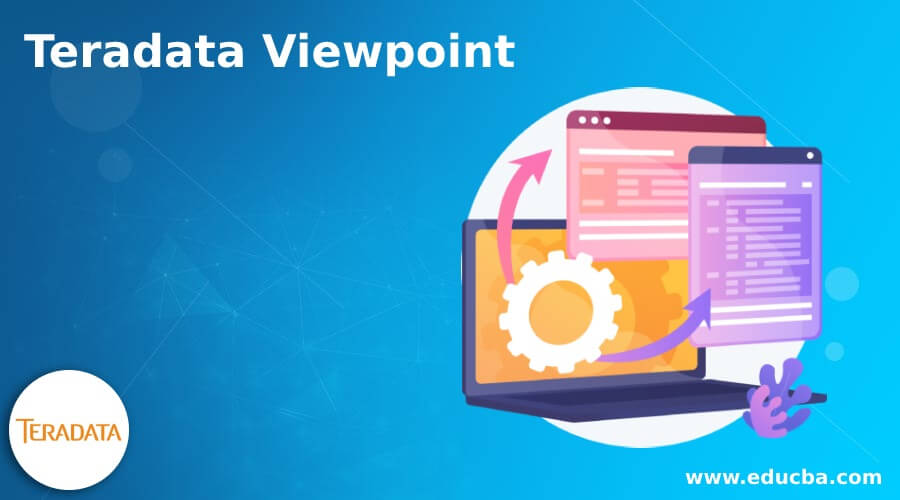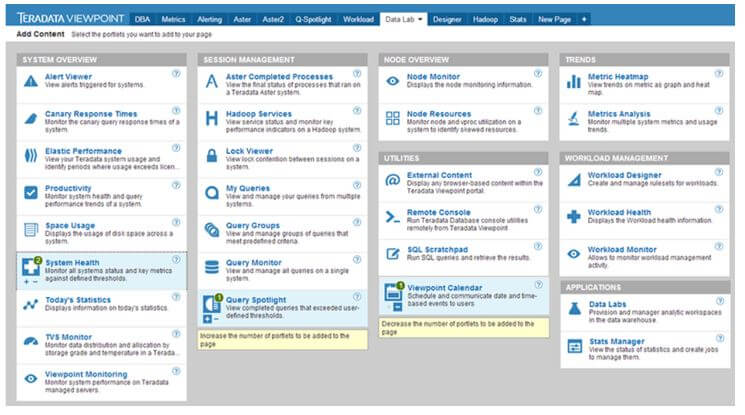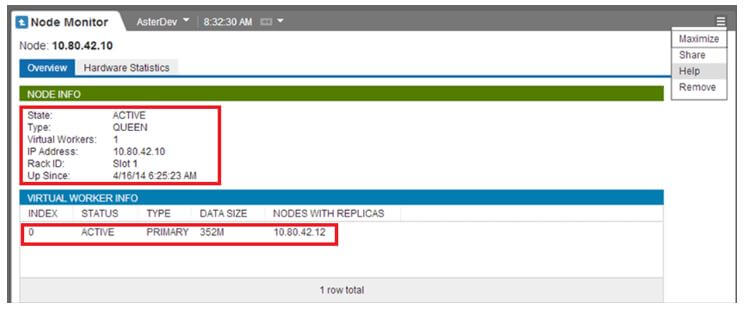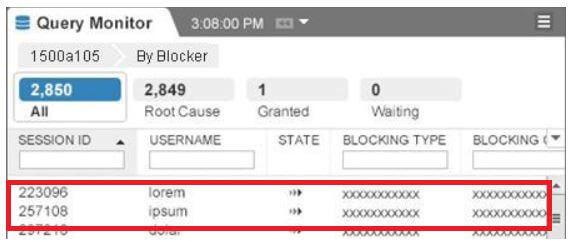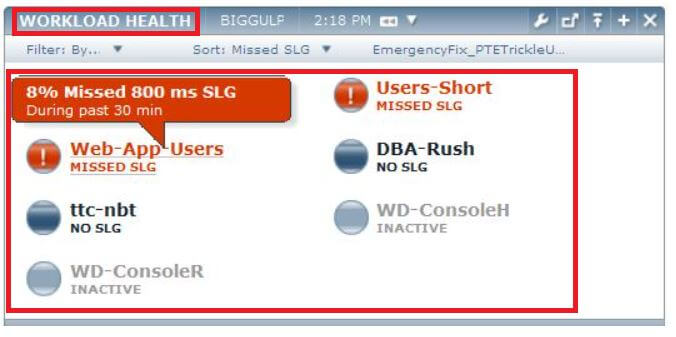Updated March 13, 2023
Introduction to Teradata Viewpoint
Teradata being a vast platform and system it is made up of various products in the Teradata market. Every Teradata system installed will be made up of a large number of Teradata products installed in the system. These products may include Teradata presto, Hadoop systems, Teradata DB systems etc. The Teradata viewpoint is ideal when all these products need to be monitored from a single operational system. The Teradata viewpoint helps to have a consolidated view of all these systems associated with it. These systems help provide system-level monitoring and management for both enterprise-level products and system-level products. The service is extended for both administrators and users who use the system at a business level.
Features of Teradata Viewpoint
Given below are the features mentioned:
- The Teradata viewpoint systems include an item called the portlets. These portlets allow Teradata management bundles and monitoring of workload across various applications in a very effective manner.
- One of the key advantages of Teradata viewpoint like products is their ability to simultaneously manage more than one system. The key capability here is its data structure can be unified and managed. This allows the viewpoint systems to manage multiple Teradata systems from a single point.
- There is another big advantage of using these viewpoint kinds of tools is its ability to provide a web-based application kind of portal. These web application-based portals. The more key capability of these Teradata viewpoint systems is each, and every user can customize the view boards as per their needs. So, this ability to customize their dashboards are among the key capabilities of Teradata viewpoint systems.
- Another major advantage of these viewpoint systems is there to ability connect with various devices. Thus, more than multiple devices can be accessed through these viewpoint systems. Moreover, these devices can be plugged in and connected in a very flexible manner to the system.
- It gives vast flexibility for the database managers, which allow project implementations and even sophisticated maintenance for the systems irrespective of the load maintained in the system. As a result, all the management can be performed in a very sophisticated manner, even at very peak periods of the system.
- Each and every query which is executed across all the systems can be very precisely monitored in these viewpoint dashboards. We can successfully monitor how much query has been executed, whether there are any issues in the query, even if the query is held for any specific reason can be monitored very precisely using these Teradata viewpoints.
- Another important capability of these Teradata viewpoint systems is their ability to allow access to each user as needed.
- At the same time, the portlets can be sophisticatedly removed from the system. Even the columns used in the portlets can be resized as needed.
Operations Through Viewpoint
- The viewpoint portlets allow users to access and set specific needed tasks as per the necessity in the dashboard of the portlets.
- The administrator’s load of work is considerably managed by means of these systems. Moreover, the add content screen in the page of portals allows adding these portlets.
- The browsers supported by viewpoint are as follows: Microsoft edge 41.16299.967.0, IE 11, Google Chrome 79, Mozzila firefox 72.
- Teradata Viewpoint help is a setup that provides necessary information on how the Teradata systems are expected to be monitored and managed.
- To keep a close track of each and every operation performed on the viewpoint, the viewpoint notification will be helpful. The notification section prompts a notification for each and every operation. So, each and every operation which has been performed can be sophisticatedly tracked by means of the notification section. The notifications displayed are available in the viewpoint portal for more than 72 hours.
- The Teradata viewpoint is user friendly. Easy to operate also. Even to browse the portal and its interface, the keyboard feature is more sufficient. To substantiate this feature, one good example is to navigate from one item to the other “Tab” key can be used. In order to exit from the dialogue box, the Esc key can be used.
- When the user wishes to exit from the Teradata viewpoint, the user can click the Log out option from the Teradata viewpoint portal itself.
- Every page name in the viewpoint can be easily changed using the rename option in the portlet.
- New pages can also be easily added to the system.
- By clicking the delete option, the pages which are not needed can be deleted from the viewpoint.
- More than one portlet can be easily added to the system. At the same time, the portlets can be sophisticatedly removed from the system. Even the columns used in the portlets can be resized as needed.
- For performing any specific operation on the portlets, the priority change process or even the query abortion process can be performed. For performing these processes, the corresponding databases need to be logged in by the user and used.
Teradata Viewpoint Snaps
Given below are the Teradata viewpoint snaps:
1. Data Lab
Below is a snap of the Teradata viewpoint datalab. Here is an overview of the system, the various sessions involved, details about the nodes, and even the workload manager will be associated.
2. Node Monitor
The Node Monitor helps to monitor all the nodes associated and connected to the Teradata database which has been connected.
3. Query Monitor
Major details about the queries which are being executed are displayed in the query monitor panel.
4. Workload Monitor
The workload monitor allows monitoring each and every components health track around the Teradata database system.
Conclusion
The Teradata viewpoint is among the most effective SOE among the various monitoring tools available around the market. Because this SOE quite largely reduces the efforts involved by the database administrators. The absence of these consolidated viewpoint servers may lead to hectic querying and command executions to monitor the status of each and every item associated with the system.
Recommended Articles
This is a guide to Teradata Viewpoint. Here we discuss the introduction, features, operations and Teradata viewpoint snaps, respectively. You may also have a look at the following articles to learn more –
